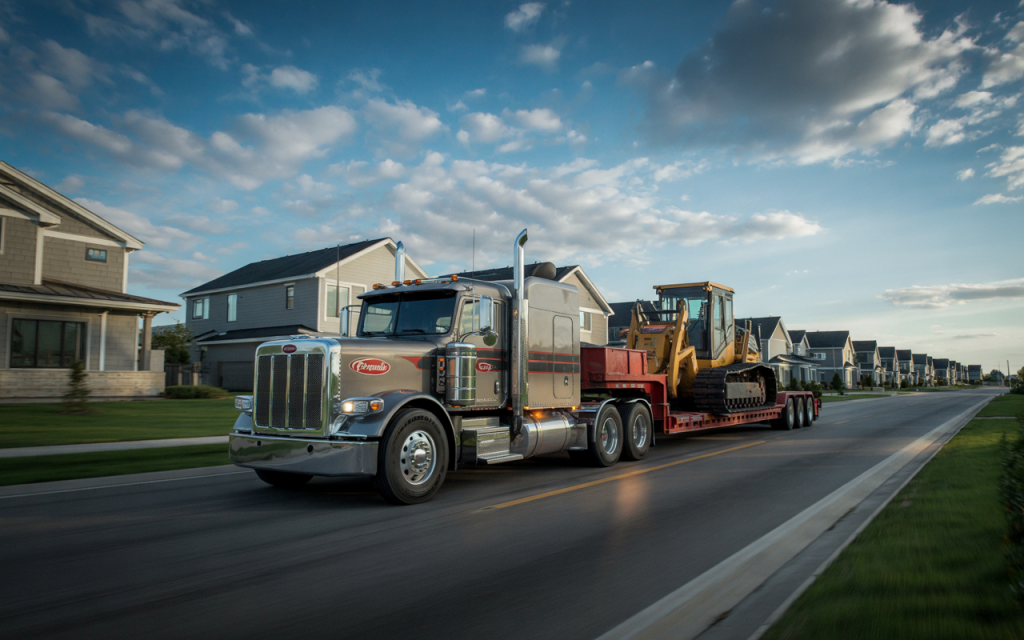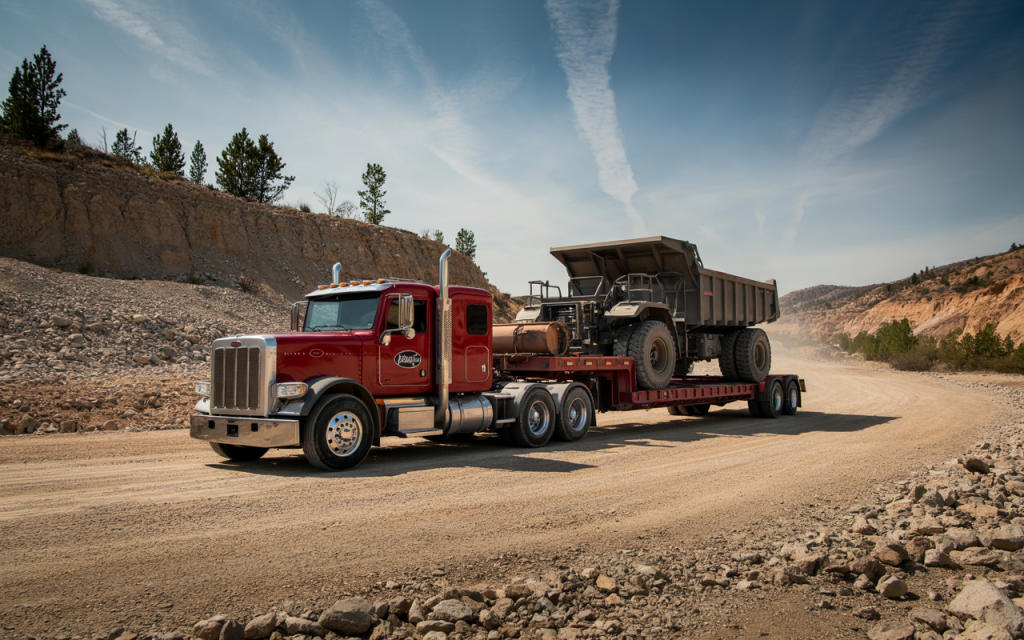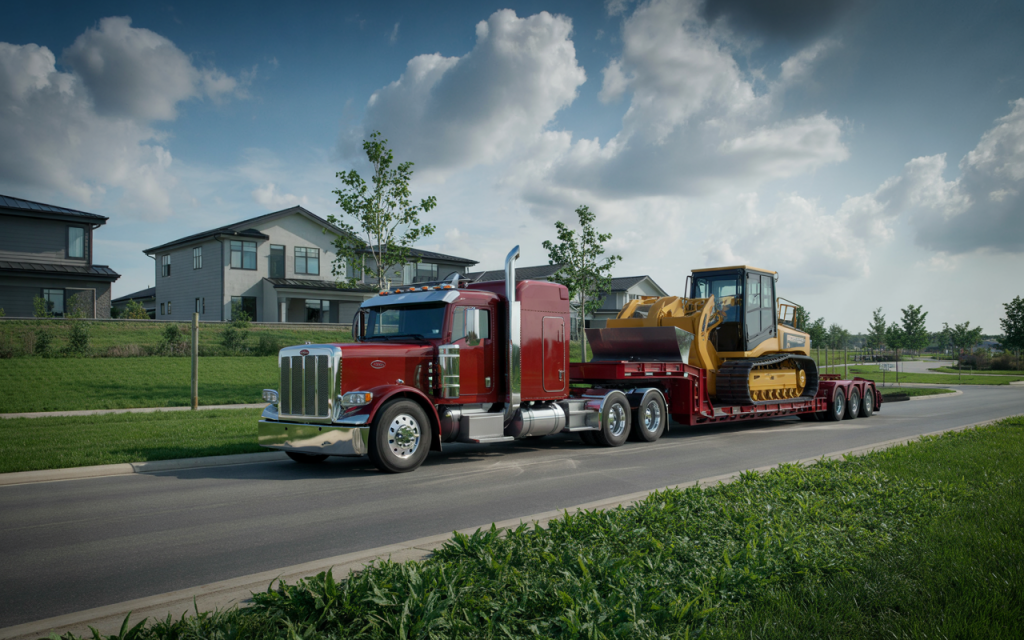How We Plan and Manage Heavy Haul Trucking Routes in Louisiana to Avoid Flood-Prone Corridors
Freedom Heavy Haul can offer expedited Pickup and Delivery for any size shipment anywhere in the USA. Contact us today for No Hassle, No Pressure Pricing.
To safely move oversized freight through Louisiana, we develop flood-aware trucking routes using advanced tools, accurate data, and detailed coordination. Our process helps avoid waterlogged roads, protect infrastructure, and ensure your load arrives on time.
In this article, you will learn How We Plan and Manage Heavy Haul Trucking Routes in Louisiana.
Understanding the Demands of Heavy Haul Trucking
Heavy haul trucking involves transporting cargo that exceeds standard legal limits for weight, width, height, or length. These loads require specialized trailers, permits, and route planning from the very beginning.
Types of Cargo That Require Heavy Haul Solutions
We typically handle shipments like:
- Industrial machinery
- Modular buildings
- Oilfield equipment
- Wind turbine components
Each move is engineered to factor in cargo dimensions, weight distribution, road geometry, and structure clearances.
Louisiana’s Flood Risks and How We at Freedom Heavy Haul Account for Them
Louisiana’s low elevation, swampy terrain, and severe weather patterns create consistent challenges for route planning. Many freight corridors are vulnerable to flooding, especially during storm season.

Flood-Prone Zones We Identify and Avoid
We closely monitor areas near:
- The Mississippi River
- The Atchafalaya Basin
- The Gulf Coast
These regions can experience rapid water rise during hurricanes, tropical storms, or seasonal rainfall. We at Freedom Heavy Haul build route timing and alternate plans around these patterns.
Road and Infrastructure Vulnerability
Rural roads and bridges in Louisiana may not support heavy loads, especially when water has weakened the ground below. This includes:
- Narrow or soft shoulders
- Roadbeds built on swamp foundations
- Bridges with limited weight tolerance
Freedom Heavy Haul examines every mile of your proposed route to assess strength, width, clearance, and safety.
Our Approach to Flood-Aware Route Mapping
Our team relies on historical data, real-time alerts, and predictive technology to avoid high-risk areas.

Mapping and Planning Tools Freedom Heavy Haul Uses
To evaluate routes, we use:
- FEMA floodplain overlays
- USGS river flow and elevation data
- Drainage capacity maps
- Live weather and traffic updates
- ProMiles and Trimble routing software
By layering your route over these data points, we eliminate uncertainty and ensure compliance with safety standards.
Legal Oversize Load Compliance in Louisiana
All heavy haul shipments through Louisiana require permits approved by the Louisiana Department of Transportation and Development (LaDOTD). These permits ensure road safety, protect infrastructure, and guide escort vehicle deployment.
Permit Process and Escort Requirements
We at Freedom Heavy Haul manage the entire permit process, including:
- Applying for oversize/overweight permits
- Complying with bridge weight restrictions
- Assigning escort vehicles as required by law
- Planning legal hours of movement, especially during weather alerts
We monitor for emergency travel bans or road closures that may delay your route.
Real-Time Monitoring and Technological Oversight
We at Freedom Heavy Haul use digital systems to actively monitor each shipment while it’s on the road. This includes:
- GPS tracking and route progression
- Live weather alerts
- Axle load monitoring
- Road condition and vibration sensors
These tools help us respond quickly to any route disruption or environmental hazard.
Coordinating with Authorities for Seamless Passage
We coordinate with multiple agencies to secure permissions and ensure safe passage through every jurisdiction your freight crosses.

Agencies and Stakeholders We Work With
Our route planning team works directly with:
- Louisiana DOTD
- Local parish transportation departments
- City authorities
- Police escorts and emergency services
This coordination allows us to clear routes ahead of time, avoid construction zones, and prepare for any local travel restrictions.
Preparing for the Unexpected: Alternate Routes and Staging
Flooding in Louisiana can change rapidly, so we always plan for contingencies.
Backup Route Development
If primary roads become unsafe or impassable, we have vetted secondary routes ready for activation. These are pre-checked for structural safety and permit compliance.
Safe Holding Areas
We also identify reinforced staging zones where trucks can safely wait out storms. These are not just parking lots, but areas selected for their load-bearing strength and accessibility.
Frequently Asked Questions about Heavy Haul Trucking Routes in Louisiana
Here are some questions and answers:
What makes Louisiana risky for heavy haul trucking?
Louisiana’s swampy terrain, low elevation, and frequent storms lead to flooded roads and weakened infrastructure that may not support heavy loads.
How do you avoid flooded roads during planning?
We use FEMA and USGS maps, elevation data, and weather forecasts to avoid known flood-prone corridors. Our routing software flags weak road segments automatically.
Do all heavy haul shipments require permits in Louisiana?
Yes. Oversize or overweight shipments must be approved by LaDOTD, and may require pilot cars or travel restrictions during certain times.
What happens if a road closes due to flooding?
We switch to a pre-planned backup route or move the vehicle to a designated staging area until it is safe to proceed.
How is real-time monitoring used during the trip?
We track every shipment with GPS, axle sensors, and live weather updates. If anything changes, we adjust routes and notify the driver immediately.
Summary
When hauling heavy or oversize freight through Louisiana, every mile requires strategic planning. Flood zones, weak infrastructure, and severe weather can delay or damage shipments without proper precautions.
We manage the process from start to finish by:
- Assessing routes for flood risk and road strength
- Securing permits and escort vehicles
- Using live data and monitoring systems
- Coordinating with state and local agencies
- Preparing alternate routes and holding zones
Your freight isn’t just moved — it’s protected, guided, and monitored until it reaches its destination safely and on time.







